The Oxford Illustrated History Of The Book James Raven
Visit to download the full and correct content document: https://ebookmass.com/product/the-oxford-illustrated-history-of-the-book-james-raven /
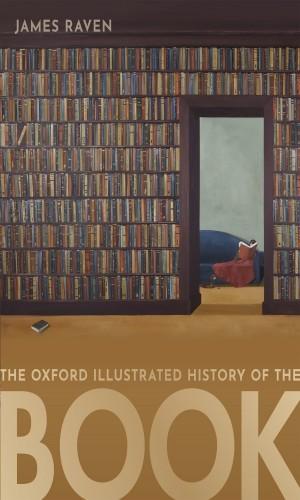
More products digital (pdf, epub, mobi) instant download maybe you interests ...
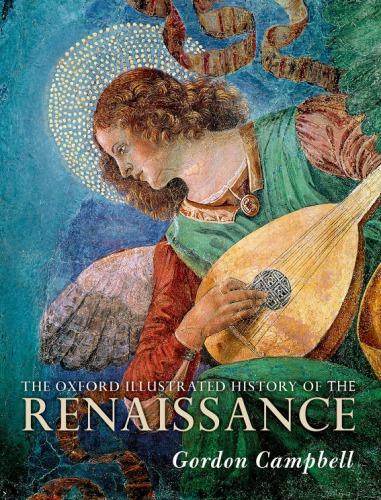
The Oxford Illustrated History of the Renaissance Campbell
https://ebookmass.com/product/the-oxford-illustrated-history-ofthe-renaissance-campbell/
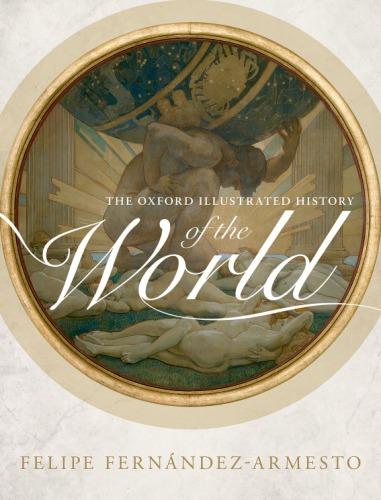
The Oxford Illustrated History of the World Felipe Fernández-Armesto
https://ebookmass.com/product/the-oxford-illustrated-history-ofthe-world-felipe-fernandez-armesto/
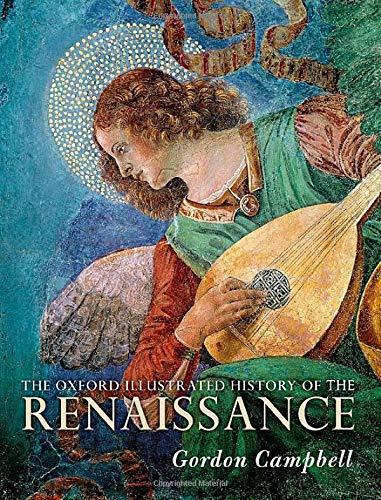
The Oxford Illustrated History of the Renaissance 1st Edition Gordon Campbell
https://ebookmass.com/product/the-oxford-illustrated-history-ofthe-renaissance-1st-edition-gordon-campbell/

The Oxford Illustrated History of the Holy Land H.G.M. Williamson Et Al.
https://ebookmass.com/product/the-oxford-illustrated-history-ofthe-holy-land-h-g-m-williamson-et-al/
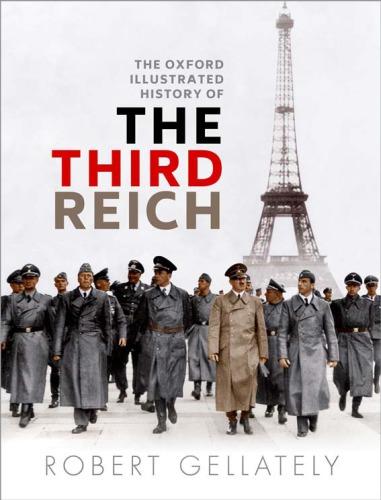
The Oxford Illustrated History of the Third Reich Robert Gellately
https://ebookmass.com/product/the-oxford-illustrated-history-ofthe-third-reich-robert-gellately/
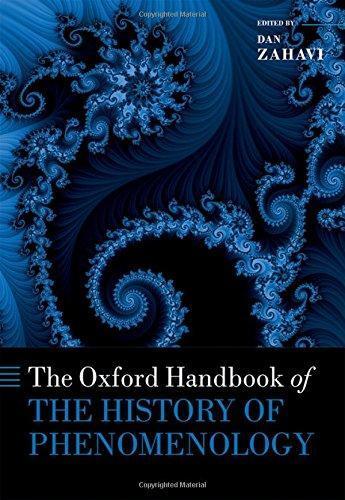
The Oxford Handbook of the History Phenomenology (Oxford Handbooks)
https://ebookmass.com/product/the-oxford-handbook-of-the-historyphenomenology-oxford-handbooks/
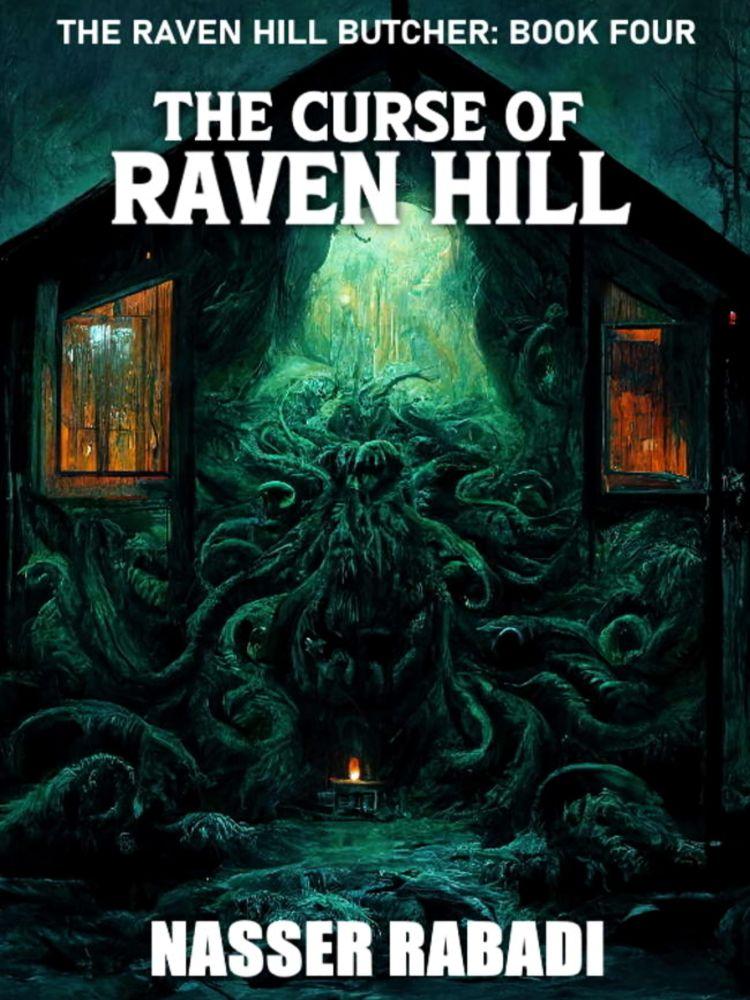
The Raven Hill Butcher 04-The Curse of Raven Hill Nasser Rabadi
https://ebookmass.com/product/the-raven-hill-butcher-04-thecurse-of-raven-hill-nasser-rabadi/
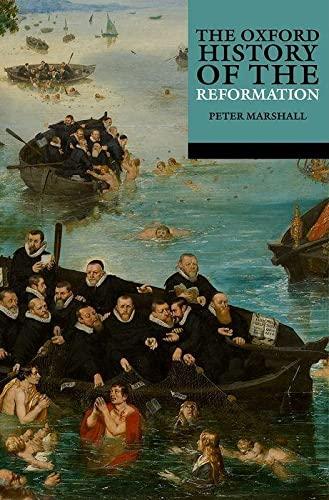
The Oxford History of the Reformation Peter Marshall
https://ebookmass.com/product/the-oxford-history-of-thereformation-peter-marshall/
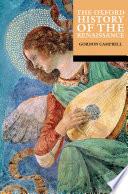
The Oxford History of the Renaissance Gordon Campbell
https://ebookmass.com/product/the-oxford-history-of-therenaissance-gordon-campbell/

Annotation
In 14 original essays, *The Oxford Illustrated History of the Book* reveals the history of books in all their various forms, from the ancient world to the digital present. Leading international scholars offer an original and richly illustrated narrative that is global in scope. The history of the book is the history of millions of written, printed, and illustrated texts, their manufacture, distribution, and reception. Here are different types of production, from clay tablets to scrolls, from inscribed codices to printed books, pamphlets, magazines, and newspapers, from written parchment to digital texts. The history of the book is a history of different methods of circulation and dissemination, all dependent on innovations in transport, from coastal and transoceanic shipping to roads, trains, planes and the internet. It is a history of different modes of reading and reception, from learned debate and individual study to public instruction and entertainment. It is a history...
THE OXFORD ILLUSTRATED HISTORY OF THE BOOK
The historians who contributed to The Oxford IllustratedHistory oftheBookare all distinguished authorities in their field. They are: ANN BLAIR, Harvard University
SHEILA S. BLAIR, Boston College and Virginia Commonwealth University
JONATHAN M. BLOOM, Boston College and Virginia Commonwealth University
CYNTHIA BROKAW, Brown University
MARIE-FRANÇOISE CACHIN, Université Paris Diderot Paris VII
BARBARA CROSTINI, Uppsala University
JEFFREY FREEDMAN, Yeshiva University
GORAN PROOT, University of Milan
JAMES RAVEN, University of Cambridge
CHRISTOPHER A. REED, The Ohio State University
ELEANOR ROBSON, University College London
DAVID RUNDLE, University of Kent
JEFFREY T. SCHNAPP, Harvard University
GRAHAM SHAW, University of London
M. WILLIAM STEELE, International Christian University, Tokyo
EVA HEMMUNGS WIRTÉN, Linköping University
THE OXFORD ILLUSTRATED HISTORY OF THE BOOK
Editedby JAMES RAVEN
Great Clarendon Street, Oxford, OX2 6DP, United Kingdom
Oxford University Press is a department of the University of Oxford. It furthers the University’s objective of excellence in research, scholarship, and education by publishing worldwide. Oxford is a registered trade mark of Oxford University Press in the UK and in certain other countries
© Oxford University Press 2020
The moral rights of the authors have been asserted
First Edition published in 2020
Impression: 1
All rights reserved. No part of this publication may be reproduced, stored in a retrieval system, or transmitted, in any form or by any means, without the prior permission in writing of Oxford University Press, or as expressly permitted by law, by licence or under terms agreed with the appropriate reprographics rights organization. Enquiries concerning reproduction outside the scope of the above should be sent to the Rights Department, Oxford University Press, at the address above
You must not circulate this work in any other form and you must impose this same condition on any acquirer
Published in the United States of America by Oxford University Press
198 Madison Avenue, New York, NY 10016, United States of America
British Library Cataloguing in Publication Data
Data available
Library of Congress Control Number: 2020935297
ISBN 978–0–19–870298–6
ebook ISBN 978–0–19–100750–7
Printed in Italy by L.E.G.O. S.p.A. Lavis (TN)
Links to third party websites are provided by Oxford in good faith and for information only. Oxford disclaims any responsibility for the materials contained in any third party website referenced in this work.
CONTENTS
ListofFigures
NotesonContributors
Timeline
1. Introduction
JamesRaven
2. The Ancient World
EleanorRobson
3. Byzantium
BarbaraCrostini
4. Medieval and Early Modern East Asia
CynthiaBrokaw
5. Medieval Western Europe
DavidRundle
6. Renaissance and Reformation
JamesRavenandGoranProot
7. Managing Information
AnnBlair
8. The Islamic World
SheilaS.BlairandJonathanM.Bloom
9. Enlightenment and Revolution
JeffreyFreedman
10. South Asia
GrahamShaw
11. Industrialization
Marie-FrançoiseCachin
12. Modern China, Japan, and Korea
ChristopherA.ReedandM.WilliamSteele
13. Globalization
EvaHemmungsWirtén
14. Books Transformed
JeffreyT.Schnapp
AbbreviationsandGlossary
FurtherReading
PictureAcknowledgements
Index
LIST OF FIGURES
Chapter1(JamesRaven)
1. Khmer stele, seventh century
CE , from Angkor Wat, Cambodia.
2. Diptych from the Vindolanda tablets, Roman Britain, first and second centuries
CE (tablet 291).
3. Beishanjiujing
北山酒經 by Zhu Gong 朱肱, published in late eleventh- or early twelfth-century
CE
Song China. National Library of China, Beijing
4. Unfolded Chinese bamboo concertina book; an eighteenthcentury copy of TheArtofWar by Sunzi (Sun Tzu) 孙子 ( c .544–496 BCE ).
5. The Mayan Madrid Codex (also known as the Tro-Cortesianus Codex or the Troano Codex), c .900–1521
CE
. Museo de América, Madrid.
6. Lakota waniyetuwowapi , or ‘winter count’, drawn on a buffalo-skin. Akta Lakota Museum & Cultural Center, Chamberlain, South Dakota.
7. The Garima Gospels, written on goatskin in the early Ethiopian language of Ge’ez ,c .330–650.
8. Full-page miniatures of the Evangelists from a Bible in Ethiopic Ge’ez and Amharic script on vellum, c .1519–20.
9. First Bible in Latvian, TāSvētāGrāmata , printed in Riga in 1694. National Library of Latvia.
10. Nahuatl Bible with an Aztec Labour Tribute, c.
1525–50. Schøyen Collection, London and Oslo.
11. Page with complex typography and layout from Augustus de Morgan’s ElementsofAlgebra, 1835. Special Collections, National Library of Australia, Canberra
.
12. Joseph Jenner Merrett’s watercolour of c
.1841–3, the first known record of a Maori woman reading. Alexander Turnbull Library, Wellington, New Zealand.
13. Pages from
A catalogue of the different specimens of cloth collected in the threevoyagesofCaptainCook,totheSouthernHemisphere, 1787. Collections at Central City Library, Otago, New Zealand
.
14.
MamusseWunneetupanatamweUp-BiblumGod
, the English Bible translated into Algonquin and printed in Boston in 1663.
15. Gospel of Mark published in Mohawk in London in 1787. Chapter2(EleanorRobson)
1. Ox shoulder-blade used as an oracle bone in China, c
.1300–1150
BCE
. British Library.
2. Chinese copy of the Buddhist Diamond Sutra, 868 CE , the oldest known complete, dated, printed book. British Library.
3. Unbaked clay tablet from a Sumerian city, southern Iraq, c .3000
BCE
. Ashmolean Museum, Oxford.
4. Fresco from the Pompeian villa of Julia Felix, c
.60
CE .
5. Greek papyrus fragment, the oldest known extract of Euclid’s Elements, c .200
CE
. Penn Museum, Philadelphia.
6. Final lines of ‘The Tale of Sinuhe’ (composed, early twentieth century
BCE ) on a limestone flake ostrakon
, Thebes, thirteenth century
BCE
. British Museum.
7. Scribes represented in low-relief sculpture from the Assyrian palace in Nineveh, northern Iraq, c.
690
BCE
. British Museum.
8. Men sitting around a folded codex, depicted on a Maya vase decorated in Late Classic style ( c.
600–900
CE
). Private owner.
9. Inca knotted-string record, or khipu, c. 1400–1500
CE
. Smithsonian Museum of Natural History, Washington, D.C. Chapter3(BarbaraCrostini)
1. Text division between Gospel books, New Testament papyrus. Vatican Library, Bodmer 14–15 (P75).
2. Nag Hammadi manuscripts: soft leather covers binding papyrus leaves. Claremont Colleges, California.
3. Sixth-century Syriac manuscript, one of the earliest illuminated Gospel books. Rabbula Gospels, Laurenziana Library, Florence. Plut. 1.56, fol. 3
r .
4. Ninth-century manuscript of the Sacra Parallela. Bibliothèque nationale de France, Paris, Parisinus graecus, 923, fol. 16
r .
5. Mise-en-page
, decoration, and Cyrillic script from an early Slavonic Gospel book, Ostromir Gospels (1056–7). National Library, St Petersburg (Russian Federation F.n. I.5), fols. 210
v –211
r .
6. Menologion of Basil II, a sumptuous book made for the emperor in Constantinople, Biblioteca Apostolica Vaticana, Vaticanus graecus 1613, p. 196.
7. Marciana Iliad, a compendium of commentaries on Homer surviving from Late Antiquity, Venice, Marcianus graecus Z. 454 (Venetus A), fol. 24
r .
8. Sixth-century Byzantine carved ivory plaque reused as the book cover to the tenth-century Echmiadzin Gospels. Yerevan, Matenadaran, MS. 2374.
9. Gospel Book of Theophanes, an exuberant and colourful product of the twelfth century, fol. 7
v
. National Gallery of Victoria, Melbourne, Australia.
10. Large-format palimpsest parchment leaf of an eighth-century book, the earliest extant fragment of Hesychius of Jerusalem’s CommentaryonthePsalms
. Messina University Library, San Salvatore 30, fol. 236
r . Chapter4(CynthiaBrokaw)
1. Text from the Song dynasty (960–1279 CE
): an edition of the Confucian Classic SpringandAutumnAnnals
. National Library of China.
2. Woodblocks of the Buddhist Tripitaka, the Tripitaka Koreana, cut 1236–51. Janggyeong Panjeon of the Haein Temple.
3. Replica of metal moveable type used to print a collection of incantations to the Buddha in 1447. Korean Culture Museum, Seoul.
4. Illustrated page from a Jianyang edition of the novel WaterMargin ( Shuihuzhuan ), published 1588-94. Bibliothèque nationale de France, Paris (Chinois 4008).
5. Illustration from the 1640 edition of the drama RecordoftheWesternChamber ( Xixiangji ), published by Min Qiji. Museen Koeln, Cologne.
6. Multilingual text from a 1693 edition of a Manchu translation of the Chinese primer, MyriadFamilyNames ( loijybegiyasing/Yuzhibaijiaxing ). Harvard-Yenching Library.
7. Representation of wooden moveable type-setting at the Imperial Printing Office, from FormulaforMoveableTypeattheWuyingPalace ( Wuyingdianjuzhenbanchengshi , 1733). Harvard-Yenching Library.
8. Pages from the TalesofIse ( IseMonogatari ), published by Suminokura Soan of Saga in 1608. New York Public Library, Spencer Collection, Sorimachi 268.
9. Japanese bookshop of Izumiya Ichibei in Edo, from the IllustratedGuidetoFamousSitesontheTōkaidō ( Tōkaidōmeishozue , 1797). British Museum, Department of Prints and Drawings.
10. Japanese wood-block colour printing: ‘The Shell Contest’ from GiftsoftheEbbTide ( Shiohinotsuto ), 1750–97. New York Public Library, Spencer Collection, Japanese 1789.
Chapter5(DavidRundle)
1. ‘St Dominic and the Albigensians’. panel of an altarpiece by Pedro Berruguete c .1480. Museo Nacional del Prado, Madrid.
2. Housing the book: a wall mosaic from the Mausoleum of Galla Placidia, Ravenna, first half of the fifth century.
3. Codex Brixianus, Italian, sixth century. Brescia, Biblioteca Civica Queriniana.
4. Cumdach of St Columba’s Psalter ( AnCathach ), Irish, eleventh century. National Museum of Ireland, Dublin. 5.
Decretum by Gratian, twelfth century, possibly made in Bologna. British Library, MS. Harl. 3256, fol. 137 .
6. Thirteenth-century bible in the vernacular, Christ Church, Oxford, MS. 178, fol. 91.
7. Manuscript of 1409, showing the author handing his work over to the French king, Charles VI. Pierre Salmon, Dialogues , Bibliothèque nationale de France, Paris, MS. fr. 23,279, fol. 53.
8. Book cover with jewels, precious metals and central ivory Crucifixion, c.
1085, for the nunnery of Santa Cruz de la Seros, Spain. Metropolitan Museum, New York.
9. Obliteration of faces in a late-medieval depiction of the Crucifixion. ‘Kissing of the page’ Oxford University Archives, Register A, fol. 9
v .
10. Codex Gigas or ‘Devil’s Bible’. National Library of Sweden, Stockholm.
Chapter6(JamesRavenandGoranProot)
1 Gutenberg Bible. Bayerische Staatsbibliothek München, 2 Inc.s.a. 197–1, vol. 1, fol. 1
r .
2. Fifteenth-century block book, featuring text within the image of a hand.
3. Title page of Werner Rolevinck, SermoinfestopraesentationisbeatissimaeMariaevirginis (Cologne, 1470). Universitäts- und Landesbibliothek Düsseldorf.
4. ‘Trivmphvs’, from Francesco Colonna, HypnerotomachiaPoliphili
(Venice, 1499). Bayerische Staatsbibliothek, Munich, Rar. 515, fol. K5
r .
5. Representation of a printing shop in the print series NovaReperta designed by Joannes Stradanus and published by Joannes Galle in Antwerp
c. 1590. Antwerp, Museum Plantin-Moretus, PK.OPB.0186.005.
6. Engraved title page of the ‘Plantin Polyglot’ or ‘ BibliaRegia
’ (Antwerp, [1568–73]). San Lorenzo de el Escorial.
7.
Writingtablesvvithakalenderforxxiii.yeeres (London: 1584). Folger Shakespeare Library, Washington, D.C., STC 101.2.
8. Fragment of an early laundry list printed with black letter in Amsterdam in 1638. Private collection, H. Mulder.
9. Depiction of a bookshop interior, wash-and-pen drawing by Salomon de Bray (1597–1664). Rijksprentenkabinet. Amsterdam.
10. ‘Le colporteur’ (the pedlar), anonymous painter of the French school, 1623. Musée des Arts et Traditions Populaires, Paris.
Chapter7(AnnBlair)
1. The ‘leonthophonus’ or ‘leucrocuta’ in the Hortussanitatis (Mainz, 1491). Countway Library of Medicine, Harvard University.
2. Index page of the Hortussanitatis (Mainz, 1491). Countway Library of Medicine, Harvard University.
3. ‘De Lepore’ (On the hare), detail from Conrad Gessner, Historiaanimalium , vol. 1 (Zurich, 1551). Stanford University Library.
4. Index page from Conrad Gessner, Historiaanimalium
showing ‘Hare’ in English. Houghton Library, Harvard University.
5. Title page of Joseph Lange. Florilegiimagni, sev Polyantheæ floribvs novissimissparsæ, libri XXIII (Lyon, 1648). Houghton Library, Harvard University.
6. Tables of universal history in Christoph Helwig, Theatrumhistoricumetchronologicum (Oxford, 1651). Houghton Library, Harvard University.
7. Page from the library catalogue of the Mazarine library, Paris. Bibliothèque Mazarine, Paris, MS 4138.
8. Auction catalogue from the library of Charles Bulteau, BibliothecaBultelliana (Paris: 1711), annotated with prices. Houghton Library, Harvard University.
9
NouvellesdelaRepubliquedesLettres : title page of issue of March 1686. Houghton Library, Harvard University.
10 Guy Patin (1601–72) in his study: engraved frontispiece to his Lettreschoisies (Cologne, 1691). Countway Library of Medicine, Harvard University.
Chapter8(SheilaS.BlairandJonathanM.Bloom)
1. Palimpsest folio from an early parchment MS of the Qurʾan in hijazi script. Copenhagen, David Collection 86/2003.
2a and b. Double page from part 17 of a thirty-part parchment MS of the Qurʾan in kufic script, Dhu’l Qaʿda 298/July 911. Dublin, Chester Beatty Library, Is 1421, fols. 1
v –2 r .
3. Opening text pages from a paper MS of the Qurʾan copied and illuminated at Baghdad in 391/1000-1. Dublin, Chester Beatty Library, CBL Is 1431, fols. 9b–10a.
4. Double page from a single-volume parchment MS of the Qurʾan in maghribi script copied in 596/1199-1200. London, Khalili collection QUR 318, fols. 106b-1071a.
5. ‘Alexander building the Iron Rampart’ from the Great Mongol Shahnama
, Tabriz, 1330s. Sackler Gallery, Smithsonian Institution, Washington, D.C. S1986.104.
6. Cut-leather binding of ʿAttar’s CollectedPoems
, Herat, 841/1438. Istanbul, Topkapi Palace Library A.III.3059.
7. Colophon page from Jami’s SevenThrones, Mashhad, Iran, 1555–65. Freer Gallery of Art, Smithsonian Institution, Washington, D.C., F1946.12, fol. 46a.
8. Calligraphy and scenes of bookmaking in an album made for the Mughal emperor Jahângîr, early seventeenth century. Freer Gallery of Art, Smithsonian Institution, Washington, D.C., F1954.116.
9. Accordion binding with calligraphy, 1265/1849
CE
. Sakip Sabanci Museum, Istanbul, 120-0164-KMI.
10a and b. Opening text pages, cover, and satchel of paper MS of the Qurʾan in sudani
script, sub-Saharan Africa nineteenth century. Chester Beatty Library, Dublin, IS 1598.
Chapter9(JeffreyFreedman)
1. Engraving by Daniel Chodowiecki, published in 1781 by C.F. Himburg in Berlin.
2a and b. French translation of Friedrich Nicolai, Das Leben und die Meinungen des Herrn Magisters Sebaldus Nothanker,
Société Typographique de Neuchâtel, 1774–7.
3. Letter of Marie-Elisabeth Michaud de Morin to Nicolas René Berryer, 4 Nov. 1750. Archives de la Bastille, MS 11,730, fol. 51.
4. Zurich pasquinade, Oct. 1776. Staatsarchiv des Kantons Zurich, A27 153, Kundschaften und Nachgänge.
5.
Lesmotionnairesaucaffé (sic) duCaveau , anonymous Paris engraving 1789. Musée Carnavalet, Paris.
6
PèredefamillelisantlaBibleàsesenfants , Jean-Baptiste Greuze, c .1755.
7.
LaLiseuseoulajeunefillelisant , Jean-Honoré Fragonard, c .1770. National Gallery of Art, Washington, D.C.
8. Title page of the original edition of Rousseau’s NouvelleHéloïse published in Amsterdam in 1761.
9.
Portraitd’unefemme, Adélaïde Labille-Guiard, c .1787. Musée des Beaux-Arts, Quimper.
10. An issue of PèreDuchesne by Jacques-René Hébert, n.d. but probably published December 1793.
Chapter10(GrahamShaw)
1. Pages from ThePerfectionofWisdomin8,000Sections (
AstasâhasrikâPrajnâpâramitâ ), palm-leaf manuscript in Pali, 1097 CE
. Bodleian Library Ms. Sansk. a.7 f. 92b.
2. Page from the Khamsa of the Persian poet Nizâmî Ganjavi, with illustration of a painter and scribe at work; album of painting and calligraphy, c .1610. British Library Or. 12208 f. 325b.
3. Palm-leaf manuscript of Carita Yusup, Java, probably nineteenth century British Library Or. 16913.
4. Block-printed Buddhist Heart Sutra ( Prajnaparamitahridayasutra ) found at Karakhoto in modern Inner Mongolia. British Library Or. 12,380/3500.
5. Title page of Tamil translation of Pilgrim’sProgress published at Madras, 1793. British Library 14,170.cc.1.
6. ‘Rustam Slays the White Demon’ in the Shahnama (‘The Book of Kings’), lithographic book published in Persian, Bombay, 1849. British Library 14,807.h.4 p. 135.
7a and b. Illustrated manuscript of the Ramayana , prepared 1649-53, for the ruler of Mewar in Rajasthan. British Library Add. 15,297(1) fols. 141 v –142 r
8. Fragment of a Buddhist birch-bark scroll written in Gandhari in kharosthi script. British Library fragment 1 part 5 r
9. Opening page of a finely illuminated nineteenth-century copy of the GuruGranthSahib.
British Library Mss Panjabi D 1 main text sequence fol. 1
v
. Chapter11(Marie-FrançoiseCachin)
1. Advertisement for the Dictionnairedel’IndustrieetdesArtsIndustriels , 1879, Bibliothèque nationale de France, Paris.
2. Lithographic press manufactured by Henri Voirin, second half of the nineteenth century. Musée Adrien Dubouché, Limoges,
3. Entrance to the Leipzig Book Fair, early nineteenth century watercolour by Georg Emmanuel Opiz.
4. Print of Richard Hoe’s newspaper printing press, 1876. Granger Collection, New York.
5.
Compositricestypographesàl’ouvragedevantleurcasse , G. Dacher, c .1890.
6. Traditional blue cover of a monthly publication of Charles Dickens’ novels, WorksofCharlesDickens,HouseholdEdition (London: Chapman & Hall, 1874).
7. Cover of TheGoldenPrimer , 1884, issued by Blackwood & Sons and illustrated by Walter Crane.
8. Cover of Baedeker’sLowerEgypt
. British Library, 10,108.d.15.
9.
NotesonNewBooks1894–95
, catalogue of G.P. Putnam’s Sons, New York and London.
Bibliothèque nationale de France, Paris, Catalogue Q-10-B.
10. Poster, 1894, by Edward Penfield to advertise an issue of Harper’sMagazine.
Bibliothèque nationale de France, Paris. Chapter12(ChristopherA.ReedandM.WilliamSteele)
1a and b.
QuotationsfromChairmanMaoZedong [ MaoZhuxiyülu
] 2nd edn (Shanghai: General Political Department of the Chinese People’s Liberation Army, 1966). Harvard-Yenching Library, Harvard University.
2. Robert Morrison, DictionaryoftheChineseLanguage (Macao: East India Company Press, 1815–23). Bodleian Library, Oxford University.
3a, b, and c. Miniaturized KangxiDictionary (Shanghai: Dianshizhaishuju , 1889 edn, in two vols.). Chinese University of Hong Kong Library.
4. Sibucongkan [ FourBranchesofLiterature
] (Shanghai: Commercial Press, 1919–36). Thompson Library, The Ohio State University, Columbus, OH.
5a, b, and c. Lu Xun, CalltoArms [ Nahan ] (Shanghai: Beixin shuju, [1929]). Harvard-Yenching Library, Harvard University.
6. First complete Chinese translation of the
CommunistManifesto
[ Gongchandangxuanyan
] (Shanghai: Socialist Research Society, 1920).
7a and b. Sun Yat-sen’s ThreePrinciplesofthePeople [ Sanminzhuyi
] (Shanghai: Minzhi shuju, 1927). University of California. 8.
DictionaryoftheChineseLanguage [ Hanyudacidian
] (Shanghai: Cishu Publishers, 1986–2010, 13 vols.).
9a, b, c, and d. SaikokuRisshihen
[ ExamplesofSuccessinWesternCountries ], Nakamura Masanao’s translation of Samuel Smiles, SelfHelp (1859) published in Japanese binding, 1871 (9a and b) and in moveable type and Western binding by the Shūeisha Publishing Company, 1877 (9c and d). Printing Museum, Tokyo.
10.
Kokoro by Natsume Sōseki, first published in 1914 by Iwanami Shoten. Iwanami Shoten, Publishers.
11. Cover of 2 April 1941 issue of ShashinShūhō ( PhotographicWeeklyReport ), depicting the ‘Smile Campaign’. Japan Center for Asian Historical Records, National Archives of Japan.
12 a and b.
TheDongnipsinmun (a) and
TheIndependent (b), 1896; Korea’s first privately managed modern newspaper. Korea Press Foundation.
13. ‘The Haruki Typhoon has landed’, press photo of sales of the Korean translation of Murakami Haruki’s 2017 novel Kishidanchō-goroshi
. Newsis News Agency.
Chapter13(EvaHemmungsWirtén)
1. Portrait of Victor Hugo by Leon Bonnat. Paris, Maison de Victor Hugo.
2. Caricature from the magazine Puck, 1886.
3. Facsimile edition of the first ten Penguin paperbacks, issued for Penguin’s 50th anniversary in 1985.
4. The Boekhandel Dominicanen in Maastricht, a former Dominican church converted into a bookstore.
5. Xerox 914, advertised in 1961.
6. Steampunk take on the book, combining the old and the new in a Lego package.
7. Cover of HarryPotterandtheFillerofBig
.
Chapter14(JeffreyT.Schnapp)
1. Two 2-page spreads (pp. 11–14) from 1 st edition of Stéphane Mallarmé’s Uncoupdedés (1914).
2 Two 2-page spreads from Filippo Tommaso Marinetti’s ZangTumbTuuum (Milan, 1914).
3. A 2-page spread from an El Lissitzky-designed edition of Vladimir Mayakovsky, DlyaGolosa
[ ForTheVoice ] (Berlin, 1923).
4. Two 2-page spreads from Lāszlō Moholy-Nagy, DynamikderGross-stadt , in Malerei,Fotografie,Film , issued in Bauhausbücher 8, 1925.
380–381
5. A 2-page layout from Marshall McLuhan and Quentin Fiore, TheMediumistheMassage (New York, 1967).
6. Illustration from Nicholas Negroponte (with Muriel Cooper), BookswithoutPages report to ARPA, 1979.
7. Bruno Munari, AnunreadableQuadrat-print [ libroillegibilebiancoerosso ], (Hilversum, 1953) from Giorgio Maffei, Munari—Ilibri (Mantua, 2008). pp. 86–7.
8. Screen capture from Craig Mod on post-artefact book.
9. Single-page spread from Amaranth Borsuk and Brad Brouse, BetweenPageandScreen (Siglio Press, 2012).
NOTES ON CONTRIBUTORS
Ann Blair is Carl H. Pforzheimer University Professor at Harvard University where she teaches early modern European cultural and intellectual history and book history. She is especially interested in the history of intellectual practices. Her publications include The Theater of Nature: Jean Bodin and Renaissance Science (Princeton, 1997) and Too Much to Know: Managing Scholarly Information beforetheModernAge(New Haven, 2010).
Sheila S. Blair and Jonathan M. Bloom shared the Norma Jean Calderwood University Professorship of Islamic and Asian Art at Boston College and the Hamad bin Khalifa Endowed Chair of Islamic Art at Virginia Commonwealth University. Jointly and individually they are the authors, co-authors, or editors of many books and articles on various aspects of Islamic art and architecture. Sheila Blair is particularly interested in calligraphy in the Islamic lands and the arts of the book in the Mongol period, and is the author of the prize-winning book Islamic Calligraphy (Edinburgh, 2008). Jonathan Bloom is particularly interested in the history of paper in the Islamic lands and Europe, and is the author of the prize-winning book Paper beforePrint(New Haven, 2001).
Cynthia Brokaw is Professor of History at Brown University, Providence, Rhode Island. A scholar of late imperial Chinese history, she specializes in the history of the pre-modern Chinese book. Her Commerce in Culture: The Sibao Book Trade in the Qing and Republican Periods is a study of a rural publishing industry, its distribution networks, and its impact on book culture in south China. She has also co-edited two essay collections on Chinese book history, Printing and Book Culture in Late Imperial China (with Kaiwing Chow; Boston, MA, 2007), and From Woodblocks to the Internet: Chinese Publishing and Print Culture in Transition, circa 1800to2008(with Christopher A. Reed; Leiden, 2010).
Marie-Françoise Cachin, Professor Emerita, Université Paris Diderot Paris VII, is a specialist in modern publishing history and the transnational circulation of books. She was for several years in charge of ‘Le livre et l’édition dans le monde anglophone’, a group researching book publishing in English-speaking countries. Her publications include studies of nineteenth- and twentieth-century presses and Anglo-French literary and publishing relationships and her most recent book is Une nation de lecteurs? La lecture en Angleterre,1815–1945(Lyon, 2010).
Barbara Crostini is Associate Professor in Byzantine Greek at the Department of Linguistics and Philology at Uppsala University, Sweden. She has worked extensively with Greek manuscripts, producing a catalogue at the Bodleian Library (2003) and working on
digital descriptions for Trinity College Library, Dublin, and for the online catalogue of Greek manuscripts in Sweden (www.manuscripta.se.) Her online edition of a Greek psalter with catena commentary at the Vatican Library was sponsored by the Bank of Sweden through the Ars edendi programme at Stockholm University. She co-curated the volumes A Book of Psalms from Eleventh-Century Byzantium: The Complex of Texts and Images in Psalter Vat. gr. 752, with G. Peers, Studi e Testi 504 (Vatican City, 2016) and GreekMonasticisminSouthernItaly:theLife ofNeilosin Context, with I. Murzaku (London, 2017).
Jeffrey Freedman is Professor of European History at Yeshiva University in New York. He received his PhD in History from Princeton University, his research focusing on communication and the circulation of ideas in Enlightenment Europe, with particular emphasis on the French- and German-speaking worlds. His books include Books Without Borders in Enlightenment Europe (Philadelphia, 2012), a study of the Franco-German book trade in the late eighteenth century, and A Poisoned Chalice (Princeton, NJ, 2002), a micro-historical study of the genesis, mutation, and circulation of a spectacular news story from the late eighteenth century. His most recent project is a study of fear in Old Regime and Revolutionary France.
Goran Proot researches early modern book history at the University of Milan. He was formerly Andrew W. Mellon Curator of Rare Books at the Folger Shakespeare Library, Washington, D.C., and Director of the Short Title Catalogue Flanders project (STCV), the online bibliography of pre-1801 hand-press books published in Flanders. He is editor-in-chief of the book historical journal De Gulden Passer. His doctoral work focused on Jesuit theatre performances in the period 1575–1773 and the book historical aspects of printed theatre programmes. In his spare time, he studies book design before industrialization.
James Raven FBA is a Fellow of Magdalene College, Cambridge, Director of the Cambridge Project for the Book Trust, and Professor Emeritus of Modern History at the University of Essex. His books include What is the History of the Book? (Cambridge, 2018);
Bookscape:GeographiesofPrintingandPublishinginLondonbefore 1800 (London, 2014); The Business of Books: Booksellers and the English Book Trade 1450-1850 (London and New Haven, CT, 2007 and awarded the DeLong Prize in the History of the Book); Lost Libraries: The Destruction of Book Collections since Antiquity (London, 2004), and London Booksellers and American Customers: TransatlanticLiterary Community andtheCharlestonLibrary Society, 1748–1811(Columbia, SC, 2002).
Christopher A. Reed is Associate Professor of Modern Chinese History in the History Department at The Ohio State University, Columbus, Ohio. He specializes in late imperial and modern Chinese history and is the author of the 2005 International Convention of Asia Scholars (ICAS) prize-winning book, Gutenberg in Shanghai: Chinese Print Capitalism, 1876–1937 (Vancouver and Honolulu, 2004). With Cynthia Brokaw, he co-edited From Woodblocks to the Internet; Chinese Publishing and Print Culture in Transition, circa 1800 to 2008 (Leiden, 2010). He has published many other articles and chapters on Chinese print capitalism and print communism. He also contributed fifteen entries on Chinese publishers to the Oxford CompaniontotheBook(Oxford, 2010).
Eleanor Robson is Professor of Ancient Middle Eastern History at University College London and runs the AHRC-GCRF funded Nahrein Network for the sustainable development of antiquity, heritage and humanities in post-conflict Iraq and its neighbours. Her research interests focus on the social and political contexts of intellectual and scholarly life in the cuneiform world, and the ways in which the ancient Middle East have been interpreted over the past two centuries. Her many publications on the subject include, most recently, TheOxfordHandbookofCuneiform Culture (co-edited with Karen Radner, 2011) and Ancient Knowledge Networks: A Social Geography of Cuneiform Scholarship in the First Millennium BC (London, 2019).
David Rundle is Lecturer in Latin and Manuscript Studies, Centre for Medieval and Early Modern Studies, University of Kent. He specialises in Renaissance intellectual and cultural history, in particular using the palaeographical and codicological evidence of
manuscripts to spread the circulation of humanist ideas across Europe in the fifteenth and early sixteenth centuries. He also writes on the history of libraries and on the dispersal of medieval book collections in early modern Europe, and is editor of Humanism in Fifteenth-CenturyEurope(Oxford, 2012).
Jeffrey T. Schnapp holds the Carl A. Pescosolido Chair in Comparative and Romance Literatures at Harvard University, where he is also affiliated with the Department of Architecture at the Graduate School of Design. He is co-director of the Berkman Klein Center for Internet and Society and the faculty director and founder of metaLAB@Harvard. Originally trained as a medievalist, his recent publications concern the modern and contemporary eras with a focus on media, technology, design, and the history of the book. His books include The Electric Information Age Book (2012); Modernitalia (2012); The Library Beyond the Book (2014); and FuturPiaggio:SixItalianLessonsonMobilityandModernLife(2017).
Graham Shaw is a Senior Research Fellow of the Institute of English Studies, School of Advanced Study, University of London. He retired from the British Library in 2010, having been Head of the Library’s Asia, Pacific and Africa Collections for over twenty years. For the past forty years he has researched the history of printing and publishing in South Asia from the sixteenth to the twentieth centuries. His published works include Printing in Calcutta to 1800 (London, 1981) and The South Asia and Burma Retrospective Bibliography(SABREB):Stage11556–1800(London, 1987).
M. William Steele is Professor Emeritus of Modern Japanese History at the International Christian University (Tokyo), with a Ph.D. in History and East Asian Languages from Harvard University. His work focuses on the social and cultural history of Japan in the late nineteenth century, the period of Japan’s modern transformation. His book, Alternative Narratives in Modern Japanese History (London and New York, 2003) examined new ways to document and interpret Japan’s encounter with the West. He is especially interested in the role of images, including woodblock prints, newspaper illustrations and photographs, the subject of a co-edited book (with Yulia Mikhailova), Japan and Russia: Three Centuries of Mutual Images
(Folkestone, 2008). His recent publications concern reaction and resistance to the introduction of Western things and ideas into Japan in the 1870s and 1880s.
Eva Hemmungs Wirtén is Professor of Mediated Culture at the Department of Culture and Society, Linköping University, Sweden. She has written extensively on the cultural history of international copyright, the public domain and, more recently, on patents as documents. Her most recent book is MakingMarieCurie:Intellectual Property and Celebrity Culture in an Age of Information (Chicago, 2015). In 2017, she was awarded an ERC Advanced Investigator Grant for the project ‘Patents as Scientific Information, 1895–2020’.
TIMELINE
c. 3500 –
1900
symbols in the Indus Valley Script used on seals at Harappa and Mohenjodaro in India and Pakistan
c. 3200
thousands of clay tablets impressed with cuneiform in southern Mesopotamian cities such as Uruk and, later, Babylon; earliest hieroglyphic inscriptions, on Egyptian grave goods
c.
3000
earliest surviving blank papyrus rolls in Egypt
c. 2600
earliest known surviving inscribed papyrus scrolls and wooden writing boards in Egypt
c.
2500
scrolls created from animal skins in Egypt; earliest known Chinese writing, on pottery and bronze containers
c.
2100
waxed wooden writing boards used in Mesopotamia
c.
1800
alphabets, simplifying hieroglyphs, incised on rocks in quarries in Sinai desert
c.
1600
writing on clay (Linear A and hieroglyphs) adopted in Crete; cuneiform tablets used across the Middle East, from Cyprus to Iran
c.
1500 –
1000
Vedas, Hinduism’s most sacred texts, composed in India
c.
1400
writing on clay tablets with writing in Linear B in Crete
c.
1200
earliest surviving Chinese divination books on tortoiseshell from the city of Anyang; indirect evidence for bamboo strip books
c.
900
Olmec and Zapotec writing systems developed in Mesoamerica
c.
690
presumed adoption of papyrus in Greece
c.
670
letters and legal documents in Old Hebrew on leather and papyrus
c .650
Ashurbanipal’s library in Nineveh, Assyria
c.
650
first writing on silk in China
c.
500
widespread use of alphabetic Aramaic on leather and papyrus across the Achaemenid Persian empire
c.
500
100
Sanskrit
Ramayana epic created
c.
450
earliest surviving bamboo and wooden strip books in China
c.
composition of the Sanskrit Mahabharata
, the world’s longest epic poem
c.
400
earliest surviving Indian and Sinhalese potsherds bearing Brahmi inscriptions
c.
340
earliest surviving papyrus roll from Greece
c.
creation of the Hebrew and Aramaic Dead Sea Scrolls
foundation of the Library of Alexandria in Egypt 268
232
invention of a South Asian writing system dated to the reign of the Mauryan Emperor Ashoka and inspired by the promotion of Buddhism c .200 birch-bark and palm-leaf books used in south Asia
c.
150
increased use in China of pieces of silk for writing, partly replacing bamboo
c.
87
earliest known surviving fragments of paper (from the Han capital Chang’an (Xi’an, China) CE
Libertas Temple in Rome hosted the first public library 57
earliest known dated document from Roman Britain, a writing board from London
